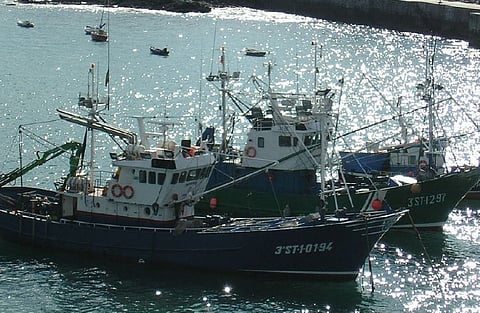

To protect vulnerable marine ecosystems (VMEs), such as deep-sea corals and deep-sea sponges, bottom contact fishing at depths of over 400 metres conducted by EU vessels within EU waters will be confined to historically fished areas, the International Council for the Exploration of the Sea (ICES) confirmed through a recent statement.
ICES added that the new "fishing footprint" is based on bottom contact fishing locations (static and mobile gears) between 2009 and 2011. Within this existing fishing footprint, the European Commission will list, and annually review, areas where VMEs are known or are likely to occur, which may lead to area closures (between 400 metres and 800 metres depth) to protect the VMEs found there.
These EU measures, along with the EU Habitats Directive, the OSPAR MPA Network, Common Fisheries Policy, and various national regulations, will contribute to achieving the objectives of the United Nations General Assembly (UNGA) Sustainable Fisheries Resolutions, which provides the policy framework for the protection of VMEs.
Request
To help meet these regulatory requirements, the European Commission requested ICES to provide the 2009–2011 fishing footprint and advise on the locations within these areas where VMEs are known to occur or are likely to occur.
The majority of EU waters between 400 and 800 metres depth are found either in the Celtic Seas Ecoregion, or the Bay of Biscay and the Iberian Coast Ecoregion. Approximately 90 per cent of this area is currently fished.
The workshops that were held to produce technical evidence led to the development of interactive maps that show the fishing locations of both static and mobile bottom gear alongside the location of known VME habitats and areas where VME indicators occur, alongside fishing data within a C-square grid.
A C-square grid system with a resolution of 0.05° longitude by 0.05° latitude (about 15 km² at 60°N latitude) was used in this advice request. This is a practical scale to collate, explore, and assess data relating to fishing activities in the marine environment.
Data from ICES VME Database was used to identify C-squares that contain VMEs or are likely to contain VMEs. The VME Database contains regularly updated and quality-controlled data submitted by ICES Member Countries.
Scenarios
Consistent with the UNGA Resolutions and FAO Deep-sea Fisheries Guidelines, ICES has constructed two scenarios, each with two options, which place emphasis on different aspects of the UN resolutions.
Scenario 1 prioritises protection of VME, irrespective of the fishing activity, while scenario 2 prioritises protection of VME but incorporates a threshold for the level of permissible fishing activity.
Under scenario 1, option 2 is the more precautionary of the two options, as it includes areas where VMEs are both known and likely to occur, by incorporating the VME elements into the identification of VMEs. Under scenario 2, assessment of fishing activity is limited to mobile bottom contacting gear only.
"While most of the EU waters between 400 and 800 metres depth fall into either the Celtic Seas Ecoregion, or the Bay of Biscay and the Iberian Coast Ecoregion, there is no explicit reason why the selection of scenario/option need be the same for each ecoregion," said Eugene Nixon, Vice-Chair of the ICES Advisory Committee.
ICES recommends that when new VME data is supplied it should be incorporated into this advisory product and reflected in future advice on fishing footprints and C-squares where VMEs occur or are likely to occur.
